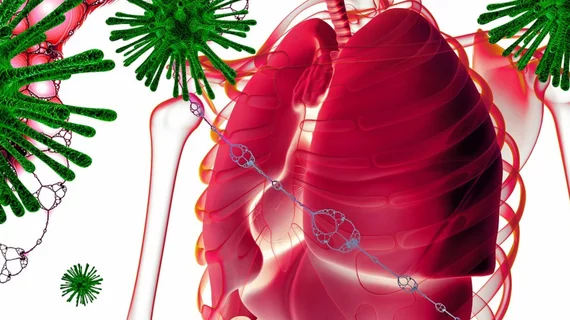The Society of Nuclear Medicine & Molecular Imaging on Thursday released a statement to help providers safely perform ventilation/perfusion lung scans amid the ongoing pandemic.
Back in March, SNMMI shared its initial guidance, recommending providers consult with local healthcare facility policy before performing the ventilation portion of these exams. And because such systems are hard to completely disinfect, clarifying the COVID-19 status of patients was also considered a top priority, the society warned.
Although there’s still plenty of unknowns about transmitting COVID-19 via ventilation systems, the group’s new recommendations reflect the continued evolution of the virus.
“The goal of this updated statement is to recognize that in some regions and clinical situations, a ventilation study may be felt to be clinically necessary to help diagnose lung disease, including vascular and airway disease,” the Sept. 3 statement read. “In these settings, performance of ventilation studies may be considered, with local and institutional COVID-19 policies and procedures for aerosol-generating and non-aerosolizing procedures serving as the primary source of guidance.”
SNMMI put forth five things to consider prior to performing these studies.
- Patients should have a document demonstrating their negative COVID-19 polymerase chain reaction test. Local policies may differ on a case-to-case basis.
- Technologists should wear personal protective equipment for aerosol-generating and non-aerosolizing procedures.
- Airflow within the exam room should be analyzed to determine the turnover time required between studies.
- Providers should consider the availability and feasibility of using ventilation agents such as 99mTc-DTPA and 133Xe gas, among others, prior to performing the exam
- Local infection control groups should be consulted to evaluate facilities, equipment and PPE for performing ventilation.
- Completing perfusion imaging before ventilation, or vice versa should be determined based on the clinical situation and with the referring physician.

